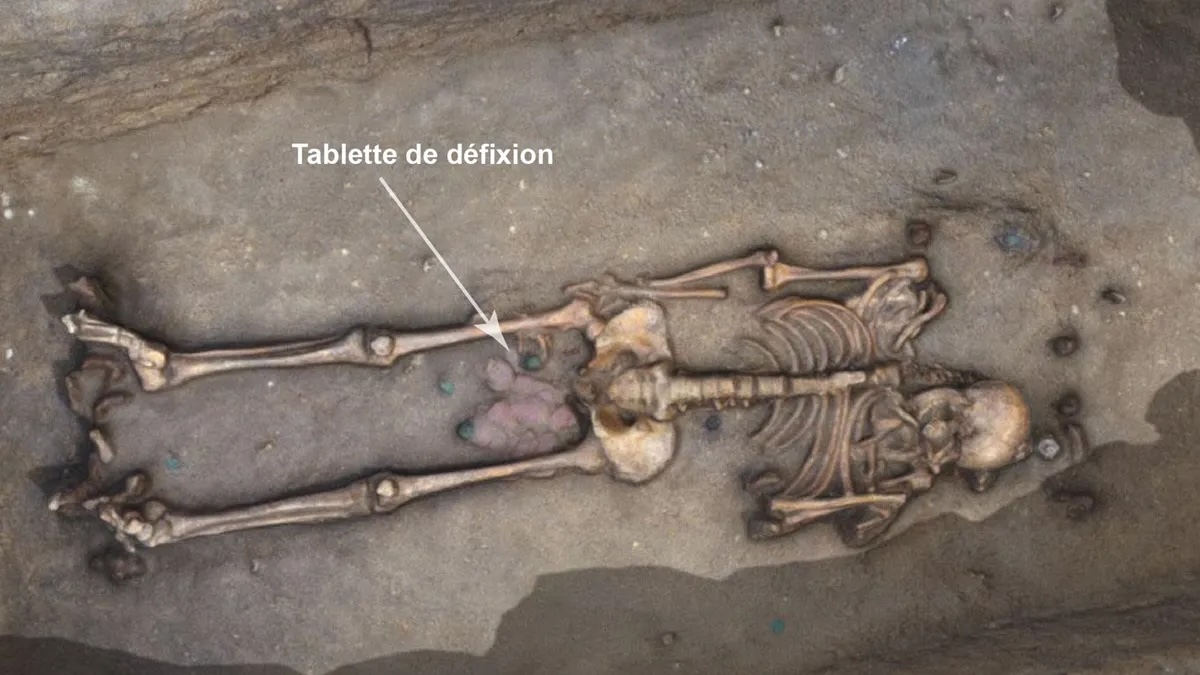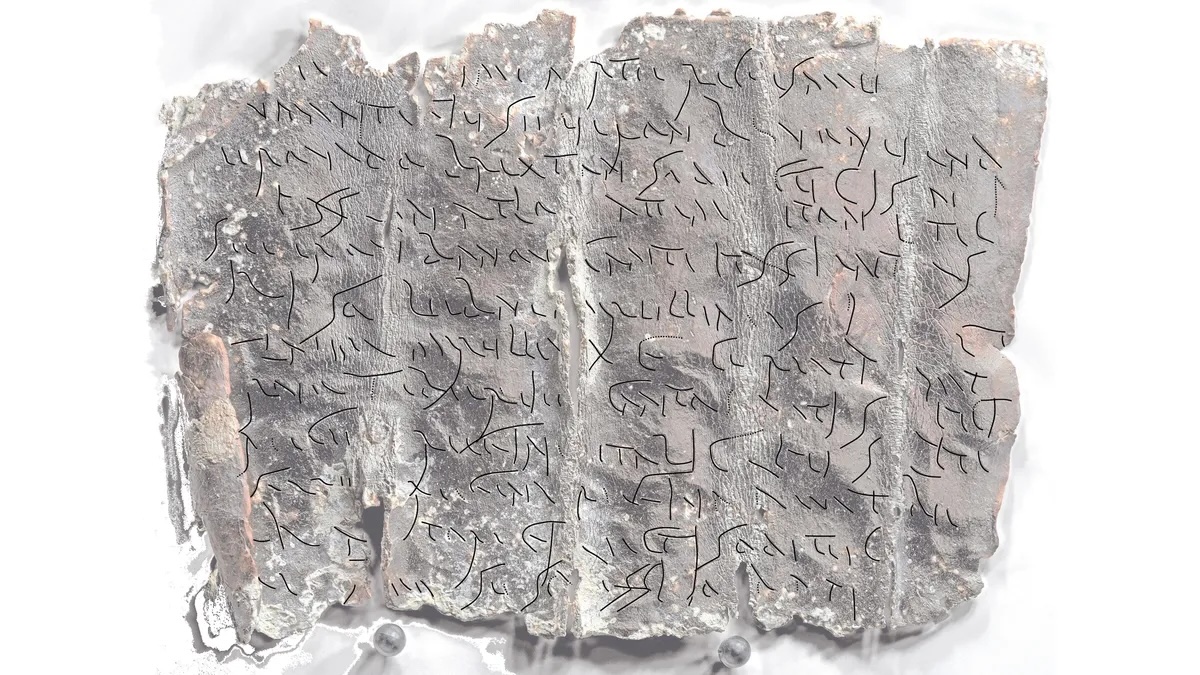Roman curse tablets
« previous post | next post »
Curse tablet found in Roman-era grave in France targets enemies by invoking Mars, the god of war
Excavation of a Roman-era cemetery in France yielded nearly two dozen lead tablets inscribed in Latin and Gaulish.
By Kristina Killgrove, Live Science ()
It's interesting precisely where they positioned the curse tablet:

A skeleton found during excavations beneath a historic hospital in Orléans, France,
has a curse tablet between its legs. (Image credit: Service Archéologie Orléans (SAVO))
Archaeologists in France have discovered dozens of Roman-era graves of men who were buried with "curse tablets," at least one of which was written in an extinct language.
Excavations underneath an 18th-century hospital in the town of Orléans, about 75 miles (120 kilometers) southwest of Paris, have revealed more than 60 burials arranged in a single row along a wall. The cemetery, which dates from the end of the first century to the beginning of the third century, was atypical for this time because the burials were dug in a row, there were no women or children, there were traces of painted wooden coffins, and there were no cremations. This could mean that the dead were from a particular group, such as members of the same profession, according to the Orléans Archaeology Service, which excavated the site.
Even more unusual was the discovery of 21 curse tablets, which are small, rolled-up lead plates with inscriptions on them.
Also known by the Latin term "defixiones," curse tablets have been found throughout the ancient Mediterranean world. These thin sheets of lead were used to talk to the gods. Someone would write down a curse or wish, pierce the tablet with a nail, and place it in the ground via a grave or well.
So far, experts have been able to study one of the tablets in detail, and they discovered that it contained an inscription in Gaulish, an extinct Celtic language.
The man in grave F2199 was buried with a curse tablet between his legs, next to a crushed vase and several coins. After the tablet was recovered from the grave, an expert in restoration techniques chemically treated the thin lead plate to protect it from corrosion. Then, photographs were taken using reflectance transformation imaging, which produced a clear image of the unrolled tablet. Additional experts then set to work deciphering the Latin cursive inscription and translating the Gaulish words.
Pierre-Yves Lambert, a Celtic linguistics expert with the French National Center for Scientific Research, has proposed that the F2199 curse tablet is dedicated to "Mars Rigisamu," which is Gaulish for "Mars the Royal," or the Roman god of war. The inscription names several people — in both Latin and Gaulish — to be targeted by the curse for their unjust actions.

A curse tablet that has been unrolled, with an overlaid transcription
of the handwritten text. (Image credit: Service Archéologie Orléans (SAVO))
While Gaulish continued to be used for several centuries after the Roman conquest of the area, it was seldom written down — so the curse tablets are already yielding important new examples of this vanished language.
….
It is interesting to note that viewing and scanning the insides of unrolled scrolls like these curse tablets has been made possible by X-ray tomography, but to virtually unroll and read their contents depends on extensive use of AI.
Selected readings
- "AI (and human ingenuity) to the rescue" (2/6/24) — reading the inside of a 2,000-year-old rolled up scroll charred by the eruption of Mount Vesuvius
- "ytš ḥṭ ḏ lqml śʿ[r w]zqt" (11/10/22)
- "Canaanite in the news again" (2/2/23)
[Thanks to Hiroshi Kumamoto]